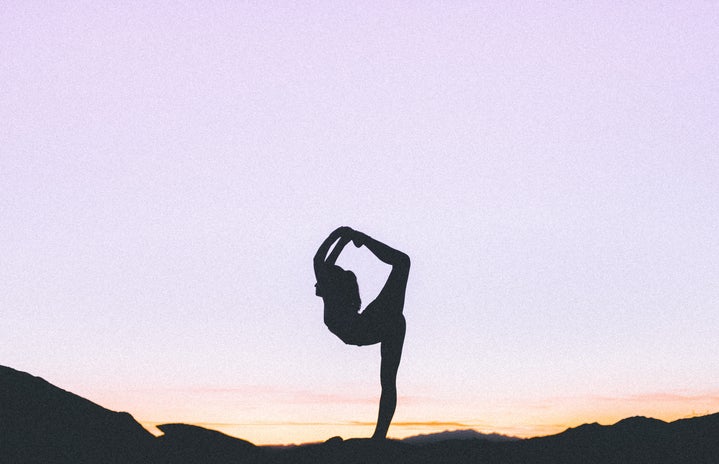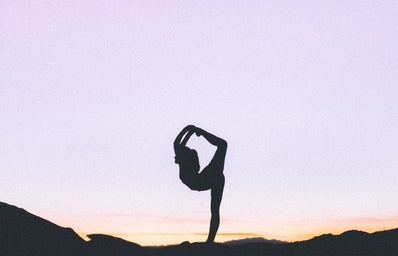“I know, Mom, I’ll wear sunscreen at the beach and I won’t use tanning beds. I’m fine!”
Sound familiar? You might think you’re doing enough to protect yourself from skin cancer, but the reality is that 1 in 5 Americans will develop the disease during their lifetime, according to a 2005 study by J.K. Robinson published in the Journal of the American Medical Association. We’ve all had the basics of preventing skin cancer drilled into us from a young age, so Her Campus sat down with cosmetic surgeon and dermatologist Neil Sadick, MD to learn more.
1. How much SPF do you really need to wear?
It’s one thing to squirt a quarter-size of SPF 15 into your hands to quickly rub over your face; it’s another thing entirely to slather SPF 30 or higher over your entire body. Both technically count as putting on sunscreen, but which do you think is actually more effective? For best protection and coverage, Sadick recommends, “A small shot glass size of sunscreen in SPF 30 is best.” That conversion rate should be easy enough to remember during spring break! (Of course, it never hurts to wear a little extra – either more sunscreen, a higher SPF, or both.)
Remembering to wear sunscreen is an awesome first step – but if you never reapply it, you’re gypping yourself of all sunscreen’s benefits. While it can be a pain, it’s important to reapply every two hours and after swimming or sweating. Otherwise, the product wears off and so does its protection. As long as you’re good about your sunscreen application, there’s no reason to need a higher SPF for certain parts of your body, but it can’t hurt if you know you’re especially prone to sunburn in certain areas like your chest or shoulders.
2. Where should sunscreen be applied?
Short answer: Everywhere! Long answer: Virtually every part of your body exposed to the sun can burn and put you at risk for skin cancer. You might not think it’s a big deal to skip your armpits, eyelids, ears, neck, hands, or feet when applying sunscreen, but forgetting those areas can lead to painful burns (and the possibility of skin cancer down the line).
3. Does makeup that includes SPF really work?
Don’t be fooled, your tinted moisturizer with SPF isn’t doing you too many favors. “You can still use it, but it’s not as effective as wearing a sunscreen with the equivalent SPF,” Sadick says. A pure sunscreen is your safest bet. Try Neutrogena’s Ultra Sheer Dry-Touch SPF 30, which goes on so lightly you can’t feel it underneath your makeup (bonus: it makes your skin feel so baby soft, it’s okay to skimp on the moisturizer!). If your favorite beauty products already have SPF in them, you don’t need to give them up – just make sure to wear sunscreen underneath. If you use makeup with SPF, remember to apply it evenly across your face. Using concealer with SPF in certain spots, for example, can lead to a blotchy tan. Not so cute!
4. Some clothing claims to have technology to shield your skin from ultraviolet rays. Does it work?
Sadick confirms this myth is true! It sounds like something out of a science fiction novel, but some companies can actually manufacture fabric woven in order to block out UV rays. “SPF clothing,” as it’s sometimes referred to, can also be designed in a way that minimizes high-risk areas’ (shoulders, back, upper arms) sun exposure. Check out the newly launched UV collection at UNIQLO, a trendy American Apparel-esque shopping hotspot originally from Korea, now available in New York and online. We love the UV-protectant UNIQLO dress on Charlize Theron! If you like to work out outside, consider wearing UV-protectant clothing since you probably won’t have time or be in the mindset to reapply sunscreen in the middle of your workout.
[pagebreak]
5. Besides a changing mole, what signs of skin cancer should readers be looking for?
The American Cancer Fund lists the ABCDE’s of skin cancer, which help distinguish a regular mole from a potentially cancerous one:
- Asymmetric: If you draw a line through this mole, the two halves will not match.
- Border: The borders of an early melanoma tend to be uneven. The edges may be scalloped or notched.
- Color: A number of different shades of brown or black could appear. A melanoma may also become red or blue.
- Diameter: Melanomas are usually larger in diameter than the size of the eraser on your pencil, but they may sometimes be smaller when first detected.
- Evolving: Any change – in size, shape, color, elevation, or another trait – points to danger.
In addition to these warning signs, Sadick recommends you watch out for, “Any bleeding, itching, or ulcer-type changes in moles.” Contact your doctor as soon as you see any potentially dangerous changes to your skin.
6. Do you need to see a dermatologist?
Unless your primary care doctor does a thorough check of your skin on an annual basis, Sadick advises seeing a dermatologist once a year for check-ups. Even if your primary care doctor does check your skin, you can still benefit from seeing a dermatologist, especially if skin cancer runs in your family or if you engage in high-risk behaviors such as using tanning beds or laying out in the sun without sunscreen. Your doctor can give you a referral for a dermatologist or you can find one in your area .
7. Can you still get cancer if you never sunburn? (For example, if you have darker skin?)
You’ve probably heard that the more often you sunburn, the more you’re at risk for skin cancer, right? But here’s the catch – it’s possible to get skin cancer even if you never burn. Girls with darker skin are still at risk for skin cancer. According to the New York Times, “Although darker-skinned people face a lower risk of skin cancer, they are more likely to develop more aggressive forms of the disease and more likely to die from it.” The problem comes from a false sense of security; dark skin has high amounts of melanin, which filters ultraviolet light, but lacks SPF (just like light skin). The solution is simple: protect your skin no matter your skin type and see a dermatologist.
8. Should you put sunscreen on your hands before getting a manicure or gel manicure if they’re going to be under UV lights?
If you know you’re going to be exposed to UV rays, such as at the nail salon while your newly painted nails are drying, Sadick recommends you wear sunscreen. Every little bit of protection and prevention counts. The UV lights at nail salons contain some of the same rays you get from direct sunlight and tanning beds, so it’s best to be safe and wear sunscreen.
If you’re serious about taking good care of your skin, you can drastically cut your risk of skin cancer. Be safe and smart this summer!

